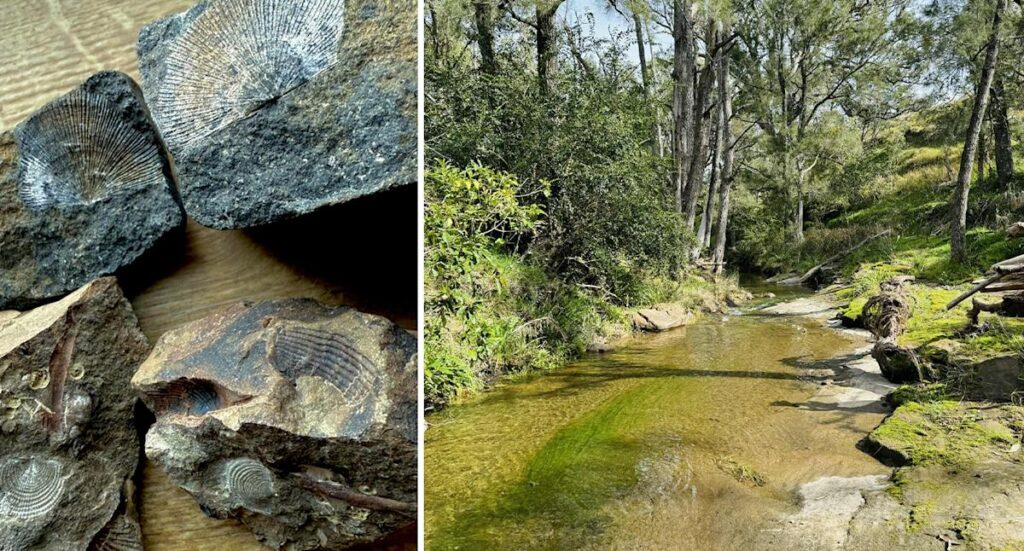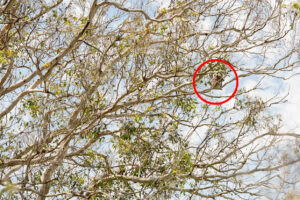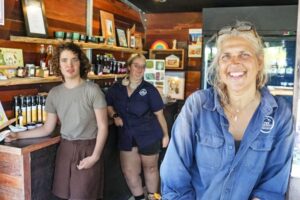
UPDATE: An incredible discovery has unfolded in New South Wales as an Aussie mother, Ashleigh Banks, unearthed two astonishing fossils dating back a staggering 340 million years in a rural creek bed. This remarkable find occurred late last month on her aunt’s property in the Upper Hunter Region during a family outing.
On a sunny weekend, Banks and her young son and nephew ventured to the creek for a treasure hunt. “We have been finding fossils here for decades,” she shared, highlighting the “relatively untouched” land that has been in her family for eight generations. Despite her familiarity with the area, she expressed her thrill at cracking open “a totally random rock” to reveal relics from the past.
As she struck two seemingly ordinary stones with a hammer, the results were nothing short of extraordinary. The darker rock revealed intricate patterns inside, while the lighter one boasted visible fossilization on its exterior. “It cracked in three to reveal plenty more,” Banks noted, explaining her son and nephew were “so surprised” by the discoveries.
These fossils are not merely rocks; they are remnants of a time when the Hunter Valley was submerged under a shallow sea, teeming with marine life. According to Dr. Patrick Smith, Technical Officer of Palaeontology at the Australian Museum, the fossils consist of strophomenid brachiopods, specifically from the family schuchertellidae and probably the genus schuchertella.
Dr. Smith elaborated, “The smaller shells belong to another family of brachiopods — productidae, probably the genus marginatia.” This means that the fossils found by Banks are from the Early Carboniferous Period, more specifically the Viséan Stage, dating them at around 346 to 340 million years old. “They were already ancient when the dinosaurs first appeared!” he emphasized.
During this period, the landscape of the Hunter Valley was drastically different, characterized by coral reefs and diverse marine creatures. “Imagine coral reefs and marine critters stretching across the region where vineyards and coal mines now sit,” Dr. Smith explained, emphasizing the significant changes over millions of years.
While brachiopods are often called ‘lamp shells’ due to their shape, they are not related to clams, despite their similar appearance. Dr. Smith encouraged the public’s interest in these ancient fossils, stating, “They’re more than just rocks; they’re little time capsules from an ocean that existed hundreds of millions of years ago.”
This discovery highlights the ongoing fascination with fossils and the rich geological history of Australia. Banks, who recently reignited her passion for fossicking after a trip to Lightning Ridge, expressed her excitement for her family’s newfound interest in exploring ancient treasures.
As more families venture into nature, treasures like these continue to be uncovered, sparking curiosity and wonder about the world’s environmental history.
Stay tuned for further updates as this story develops. Have a story tip? Email: [email protected]. Follow us on Facebook, Instagram, TikTok, Twitter, and YouTube for the latest news.







